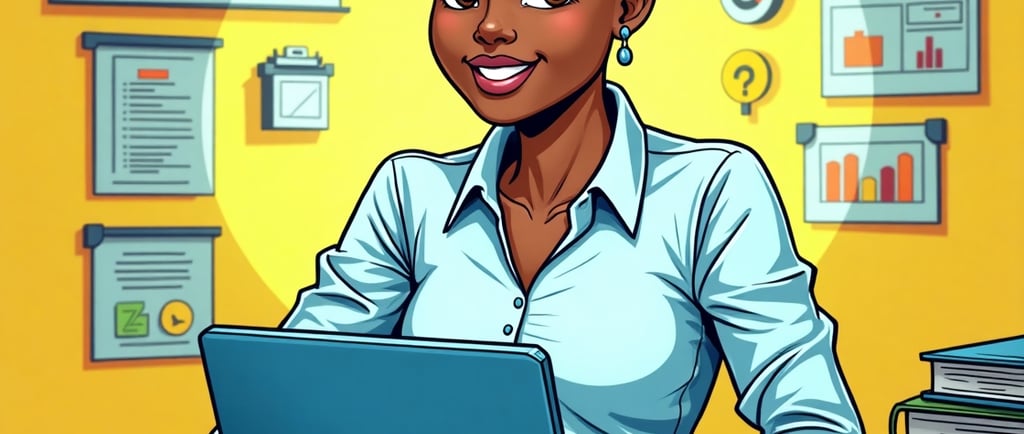Beyond AI Literacy: Building the Profile of an AI-Ready Graduate
Six essential roles every student needs to master before they leave your district
AI
7/18/20254 min read


As K-12 administrators, we've mastered the art of adapting to educational shifts. We survived remote learning, integrated social-emotional learning, and navigated countless technology rollouts. Now, artificial intelligence presents our next defining challenge—and our greatest opportunity.
The question isn't whether AI will impact our students' futures. It's whether we're preparing them to thrive in that reality.
Drawing from groundbreaking work recently shared at ISTELive 25 and the 2025 ASCD Annual Conference, educational innovators have developed a "Profile of an AI-Ready Graduate" that moves beyond basic AI literacy to focus on six core roles students must master to maximize their human potential with AI assistance.
From Knowing About AI to Working With AI
Traditional AI education focuses on awareness: what AI is, how it works, which tools exist, and how to fact-check responses. While these AI-literacy skills matter, stopping there misses a critical opportunity. Students need to practice using AI to think deeper, create better, and solve problems more efficiently than they could alone.
Your district's portrait of a graduate likely emphasizes critical thinking, creativity, and collaboration. The AI-ready graduate framework builds on these foundation skills, showing students how to amplify their human capabilities through strategic AI partnership.
Six Roles Every Graduate Needs to Master
1. The Learner
Core Expectation: Students use AI to set learning goals, create personalized study plans, identify strategies to overcome obstacles, and seek targeted feedback.
Practical Example: A struggling geometry student prompts AI to create a customized learning pathway, identifying prerequisite skills they're missing and generating practice problems that build systematically toward mastery. When stuck on proofs, they use AI coaching to identify logical gaps in their reasoning.
2. The Researcher
Core Expectation: Students leverage AI to investigate topics systematically, evaluate competing claims, and explore diverse information sources.
Practical Example: For a debate on renewable energy, students direct AI to identify conflicting claims about solar panel efficiency, map areas of scientific consensus, and explore economic arguments from multiple perspectives. They use AI to uncover cross-disciplinary connections between environmental science and urban planning.
3. The Synthesizer
Core Expectation: Students remix and refine information from various sources, adapting complexity levels and formats to meet specific needs.
Practical Example: A student researching climate change uses AI to transform complex scientific papers into accessible infographics for elementary students, then creates an audio summary for visually impaired community members, ensuring the core scientific accuracy remains intact across all formats.
4. The Ideator
Core Expectation: Students partner with AI to generate creative solutions, explore alternative perspectives, and breakthrough mental blocks.
Practical Example: Drama students collaborate with AI to brainstorm unique staging concepts for Shakespeare, exploring how the themes of Hamlet might resonate in contemporary settings. They prompt AI to suggest unconventional character interpretations that challenge traditional readings while remaining textually grounded.
5. The Connector
Core Expectation: Students use AI to enhance human collaboration, overcome language barriers, and find common ground among diverse perspectives.
Practical Example: A multicultural student government uses AI translation tools that preserve emotional tone and cultural nuances during heated budget discussions. They employ AI matchmaking to identify shared values between conflicting groups, creating unexpected alliances around common goals.
6. The Storyteller
Core Expectation: Students collaborate with AI to communicate complex ideas through multiple media formats, creating compelling narratives that resonate with intended audiences.
Practical Example: Students explaining photosynthesis create an interactive story where viewers experience the process from a water molecule's perspective, using AI to generate visuals and narration that makes abstract biochemical concepts tangible and memorable.
Implementation Strategies for District Leaders
Start with Professional Development: Your teachers need to experience these roles themselves before they can guide students. Provide opportunities for educators to practice each role within their content areas.
Integrate, Don't Isolate: Rather than creating standalone AI classes, embed these roles across existing curriculum. A history research project becomes an opportunity to practice the Researcher role; creative writing assignments develop Storyteller capabilities.
Assess the Roles, Not Just Content: Traditional assessments measure what students know. Design performance tasks that evaluate how effectively students leverage AI to enhance their human capabilities.
Address Equity Concerns: Ensure all students have access to AI tools and develop digital citizenship frameworks that address AI ethics, bias, and responsible use.
Preparing for Reality, Not Theory
The Profile of an AI-Ready Graduate provides a roadmap for helping students learn to use AI to enhance their uniquely human capabilities. By modeling and teaching these key roles, we prepare students for a world where AI integration is inevitable.
This shift moves beyond theoretical understanding to practical, creative applicability. Students don't just learn about AI—they learn to work with AI strategically and thoughtfully.
The Leadership Imperative
As district leaders, we must ask ourselves: Are we preparing students for the world that exists today, or the world they'll actually inhabit? The answer demands more than policy updates and technology purchases. It requires fundamental shifts in how we conceptualize learning, assessment, and student success.
The question isn't whether students need to learn about AI—they do. But to thrive in an AI-powered world, they need to know how to work with AI creatively, thoughtfully, and strategically. Anything less limits their future success.
Your district's next strategic plan should address this reality. The Profile of an AI-Ready Graduate offers a framework for ensuring every student who walks across your graduation stage is prepared not just for college and career, but for a future where human-AI collaboration defines success.
The conversation has shifted from basic understanding to practical application. Are you ready to lead that transformation?
Interested in implementing these changes? Learn more about ISTE+ASCD's pledge to prepare 200,000 teachers over the next two years to model AI life skills for students.
